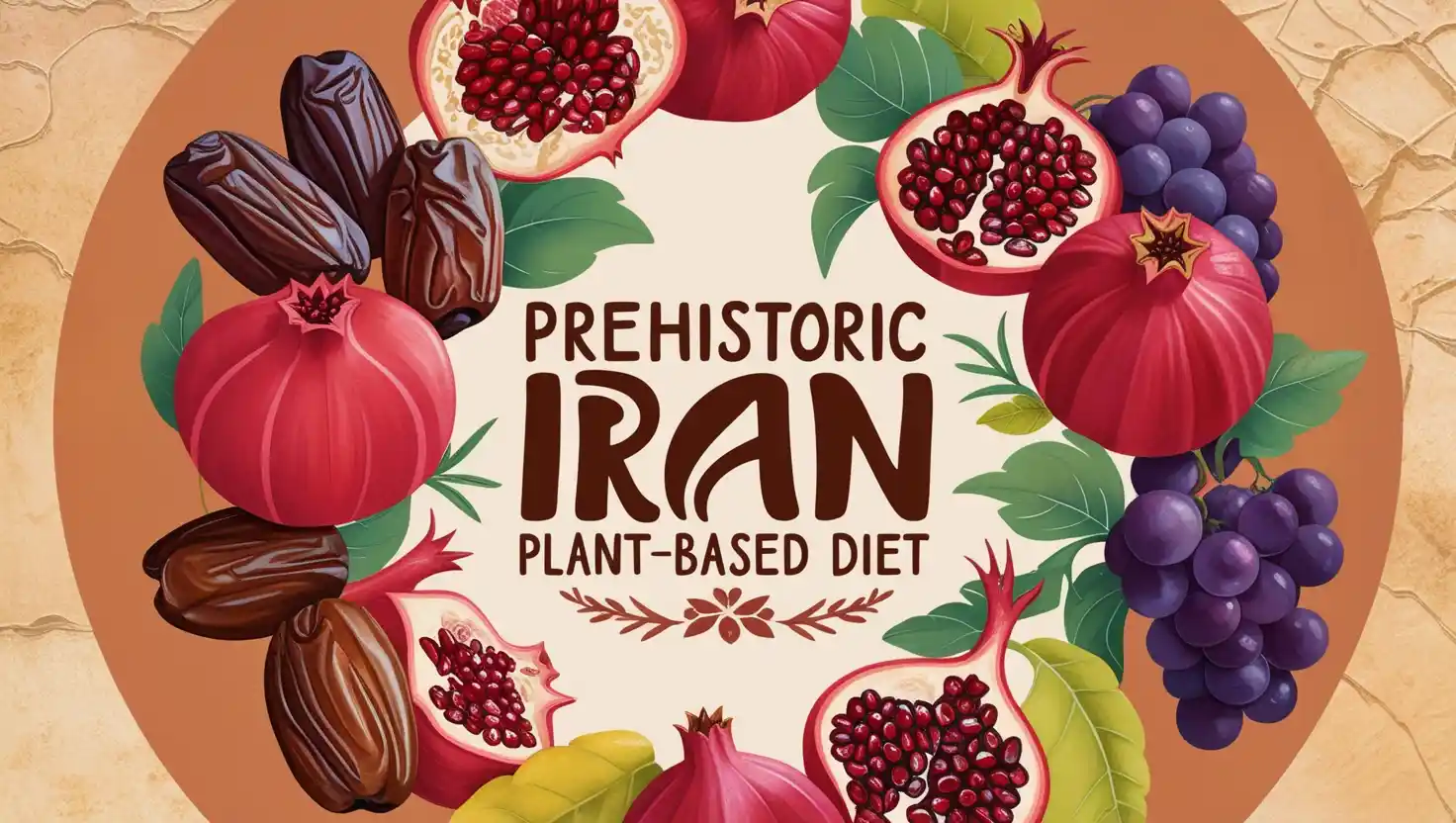Prehistoric Iran Plant Based Diet-Key Ingredients and Their Benefits
The prehistoric Iran plant based diet is a fascinating subject that reveals much about the lifestyles and survival strategies of early human societies. Contrary to the expected austere paleodiet of what is now Iran, with hunters and gathers living off their muscles and bones, actual fossils indicate that plant matter was actually dominant in their diet. This blog post discusses how this diet works. What it is constituted of, its role in culture as well as what it means for contemporary eating plans.
Understanding the Prehistoric Iran Plant-Based Diet
This paper tries to establish that prehistoric plant-based diet of Iran was determined more by the geographical and climatic variation prevailing in the region. These early dwellers depended much on the resources God had bestowed to them. They collected herbs, spices and other types of plants, they also lived by hunting, and later they started farming. This reliance on plants was not a preference because it had to be that way. Their surroundings forced them to be that way.
The fossils reveal that Iranians of the Paleolithic period also ate plant foods such as nuts and seeds, wild fruits, leagumes, roots and grains. These foods contained all the nutrient and energy required in fulfilling their daily activities in difficult circumstances.
Key Components of the Prehistoric Iran Plant-Based Diet
Nuts and Seeds: Some of the green fruits included avocados, which were important sources of protein and healthy fats and nuts like almonds, walnuts and pistachios. Specifically, flaxseeds and sesame, for instance, were gathered from the wild plant stock. Typically, such foods could be preserved and used in preparation of other foods later, therefore providing a constant supply of food all year through.
- Grains: Hay and wheat are among the initial crops that have been grown in this area. These grains served as the staple diets for so many people, such as bread and our everyday porridge.
- Legumes: Lentils and chickpeas were the most important contributors to obtained proteins. Because of their high nutritional values, instancing, they were some of the most consumed foods in the prehistoric Iranian society.
- Fruits and Vegetables: There were figs, pomegranates and dates in the wild as well as palm trees for instance date palm. Tubers such as wild silversmae were other sources of carbohydrates as well as nutrients.
- Leafy Greens: Wild thick-leaf vegetables, spinach, and amaranth were eaten in their raw and cooked form to increase diet diversity
The Importance of Seasonal Eating
However, the degree of compliance of the prehistoric Iran plant based diet was quite different from the modern world in that a lot of its attributes were related to seasonal nutrition. The first people that ever lived on the earth were great observers of the surroundings. They had equal knowledge about what plants were available seasonally so they could follow the change and alter their meals accordingly.

- Spring: Meatless days and the first hints of green appeared in the garden all of a sudden.
- Summer: Fruits were ripen which indicated that there is availability of water.
- Autumn: Days included cutting grains and nuts.
- Winter: Stored foods became staples.
This seasonal diet guarantee prehistoric Iranians to take foods with optimal nutrition and keep them close to their soil.
Medicinal Uses of Plants in Prehistoric Iran
Perhaps one of the most neglected components of the prehistoric Iran plant-based diet is the use of plants for the cure of ailments. Nutrient containing plants also had medicinal attributes to them.
- These results show that wild garlic and onions most probably had antiseptic functions.
- Other plants like mint and Thyme could have been used for digestion.
- Some seeds and nuts loaded with omega fatty acids were good for the heart.
- The multiple crop utilization technique of using food as well as medicine is developed and integrated in this system while the modern diet disregards it.
Cultural Significance of Food
- What people in prehistoric Iran consumed was not only food, but consumption was part of their culture as well. Some may have been identified to have been used in rituals or gatherings of the community members.
- Grains could either represent fertility during feast of harvest or during next harvest festival.
- This cultural dimension enrich our knowledge about the role of food in creating social lineaments and traditions of the ancient Iranian societies.
Innovations in Food Preparation
The procedures used in food preparation were unique to the times. Beyond simple cooking techniques, prehistoric Iranians likely experimented with various methods to enhance flavor and nutrition:
- Fermentation might have been used in making of Sourdough bread or in the process of pickling vegetables.
- Drying processes helped them preserved fruits and vegetables for other seasons.
- These innovations increased the availability of food, and at the same time enrich the diet in terms of availability of food concerning the current environment.
The Role of Geography in Shaping Diets
- Geographical diversity expedited the difference into diet patterns in Iran. The varied climates allowed for a wide range of plant life:
- Barley and Legumes which were some of the crops of the highland benefits greatly from cool climate.
- As most of the lowland fruits or date and figs the warm climates were favored.
- This geographical diversity was not only beneficial for their diet but also as a motivation for the interchange with the other population. They resulted in a wide interchange of agricultural information and techniques between the two parts.
The Transition to Agriculture
As time passed, there was shift to more of cultivated foods though their origin remained purely a forager. This transition marked a significant change in their lifestyle:
- Domestication of Plants: Witmore shows that by farming, people are in a position farming is allowed by stability of other food resources leading to bigger communities.
- Combination of Foraging and Farming: They relied on agriculture to feed them but they also included some of the wild foods to their diet.
It gradually set the platform for future improvements in the food and dieting systems of the nations.
Lessons from the Prehistoric Iran Plant-Based Diet
The dietary habits of prehistoric Iranians offer valuable lessons for contemporary nutrition:

- Emphasizing Plant-Based Foods: A well-planned diet should include plant foods especially those containing few processed products than animal products.
- Sustainability Practices: People can include more plant-based meals into their diets today since this will be very environmentally friendly while improving on their health.
- Cultural Connection to Food: Learning the culture of different foods can improve one’s perspective about what they take as a meal today.
- Seasonal Eating: With a seasonal supply approach we are likely to get produce that has not travelled long distances thus the reduced carbon footprint.
- Innovative Preparation Techniques: A review of traditional ways of preparing foods can help improve taste and extend the nutrient quality of foods to result in a healthier meal.
Conclusion
This paper examines the Iran pro-shoot vegetarian paleo diet, forerunner of the Stone Age diet. Which was a vast and diverse cuisine based on plant foods available seasonally. For their medicinal values, topography and culturally, and experiment with new forms of cooking. Through such features, its readers will leave this article with a broader perspective about how ancient Iranians were able to survive predominantly on plant products.
The knowledge of what they eat can teach much about today’s diet principles: sustainability, flexibility and relation with Nature. Applying these principles today can bring a change in our life styles in a positive way acknowledging our past and nature.
When examining our modern consumption patterns through the example of a prehistoric Iran plant-based diet, it’s time to have a lesson from our ancestors. But it is more than food – consideration should also be given to how important plants are to us for medicine and culture, to help foster healthier relations with today’s food – so that future generations can inherit better and bountiful populations of nutritious crops and practices.
Thus, interpreting the specifics of prehistoric Iran plant-based diet enables one not only to respect the past. But also to make a sensible decision concerning the future food regime. Through the study of these ancient practices. We should be able to build a stock practitioners with capacity to deliver a sustainable diets for the planet.
FAQ
Q1: What is the prehistoric Iran plant-based diet?
It is understood that prehistoric Iran plant based diet means the diet of early Iranians. Who mainly took nuts and seeds, grains and pulses, fruits and vegetables and consumed very little meat.
Q2: What was a list of the foods and portions of this diet?
Some of the basic parts were nuts including almonds and walnuts and seeds including flax seed. And sesame seed, grains like barley and wheat and pulses like lentils and chick peas apart from varieties of wild fruits and greens.
Q3: How did seasonal changes affect their diet?
This means that; people were able to eat only during certain seasons of the year that specific foods were in plentiful. The first Iranians who based their diet on natural foods during the seasonal period used to eat fresh greens in spring, fruits in summer, harvested grains in the autumn and meat which was preserved from the last season in winter.
Q4: Were early Iranians using plants for curing diseases?
Indeed, most plants throughout human history have been used in one way or the other to treat ailments. For instance, the use of wild garlic was probably for its antibacterial properties. While plants with a high standard of mint helped disable digestive system.
Q5: How did they use food innovation on the foods they prepared?
ACCORDING TO M.J. KHAZAEI: It can therefore be suppose that like other nation in the pre history period. Iranians had also start attempting to prepare different tasty foods through methods including fermentation and drying.
Q6: How and why may one desire the benefits of the prehistoric Iran plant-based diet today?
There is an opportunity to focus on plant food products, seasonality. And return to cultural values to make a diet modern and healthy for people and the world.
Q7: As for this diet, what archeological evidence is there?
Archaeological findings in sites like Jiroft reveal remnants of grains, seeds, and plant fibers. That indicate a sophisticated understanding of agriculture among prehistoric Iranians.
Read also.







